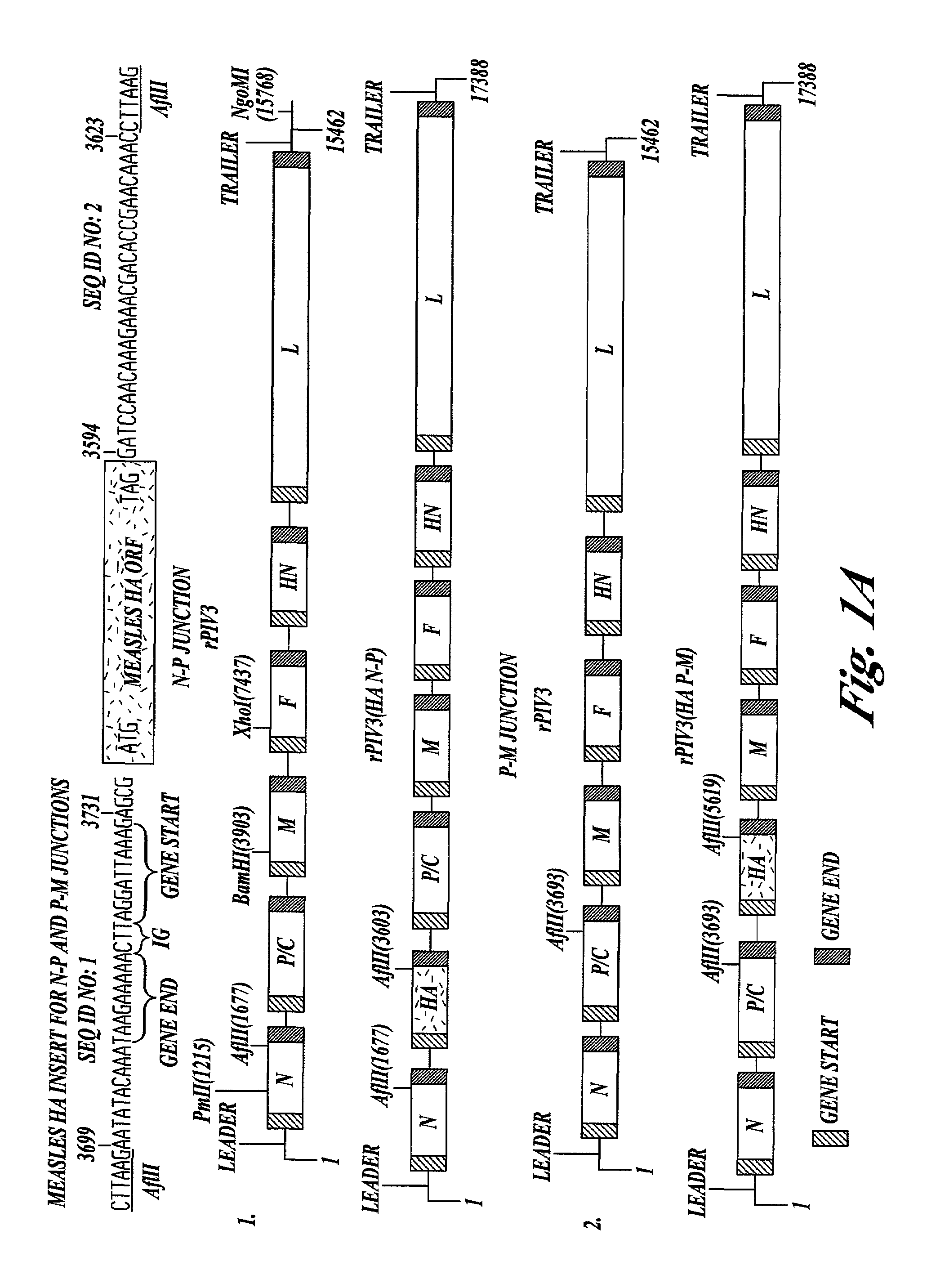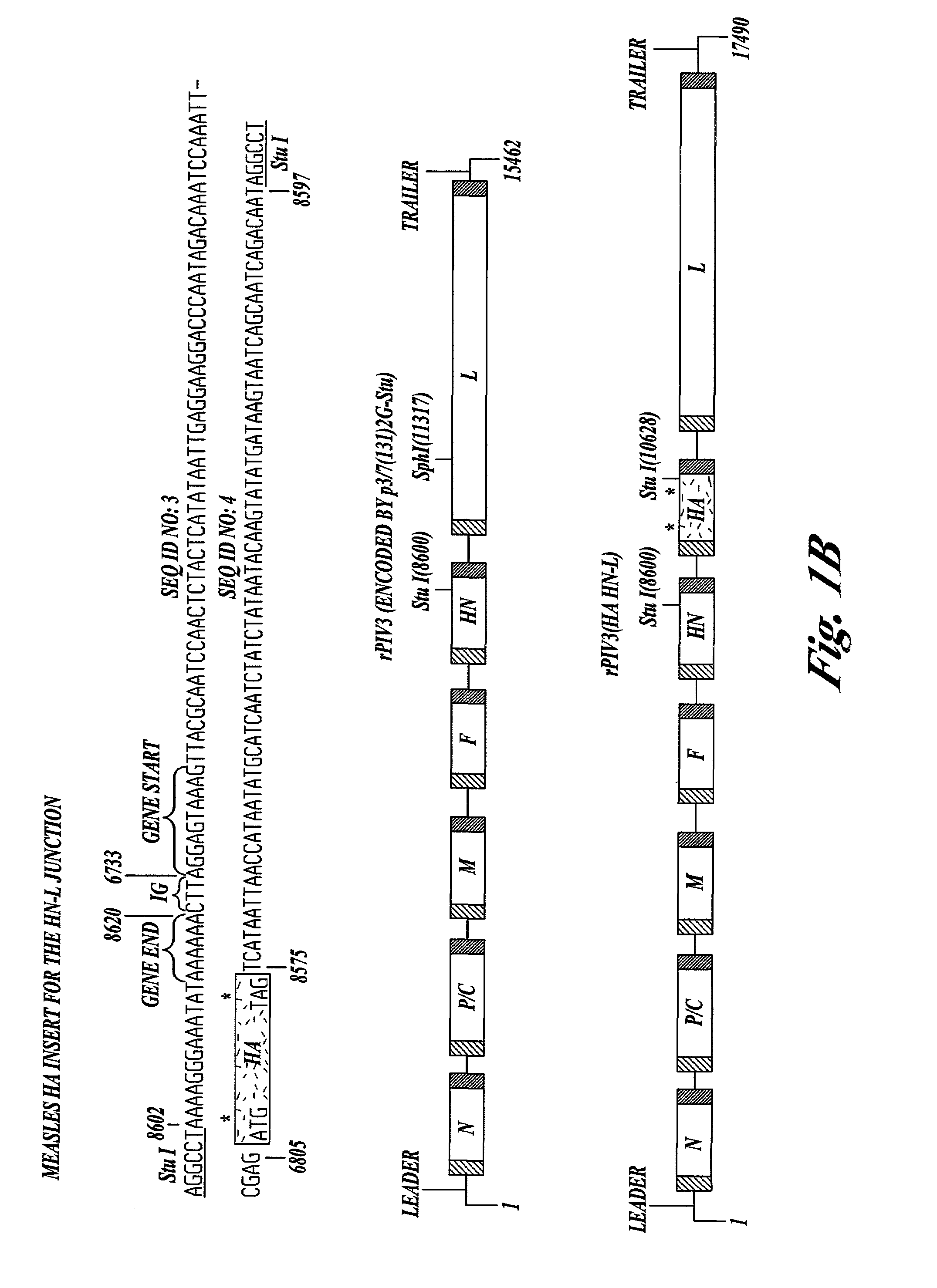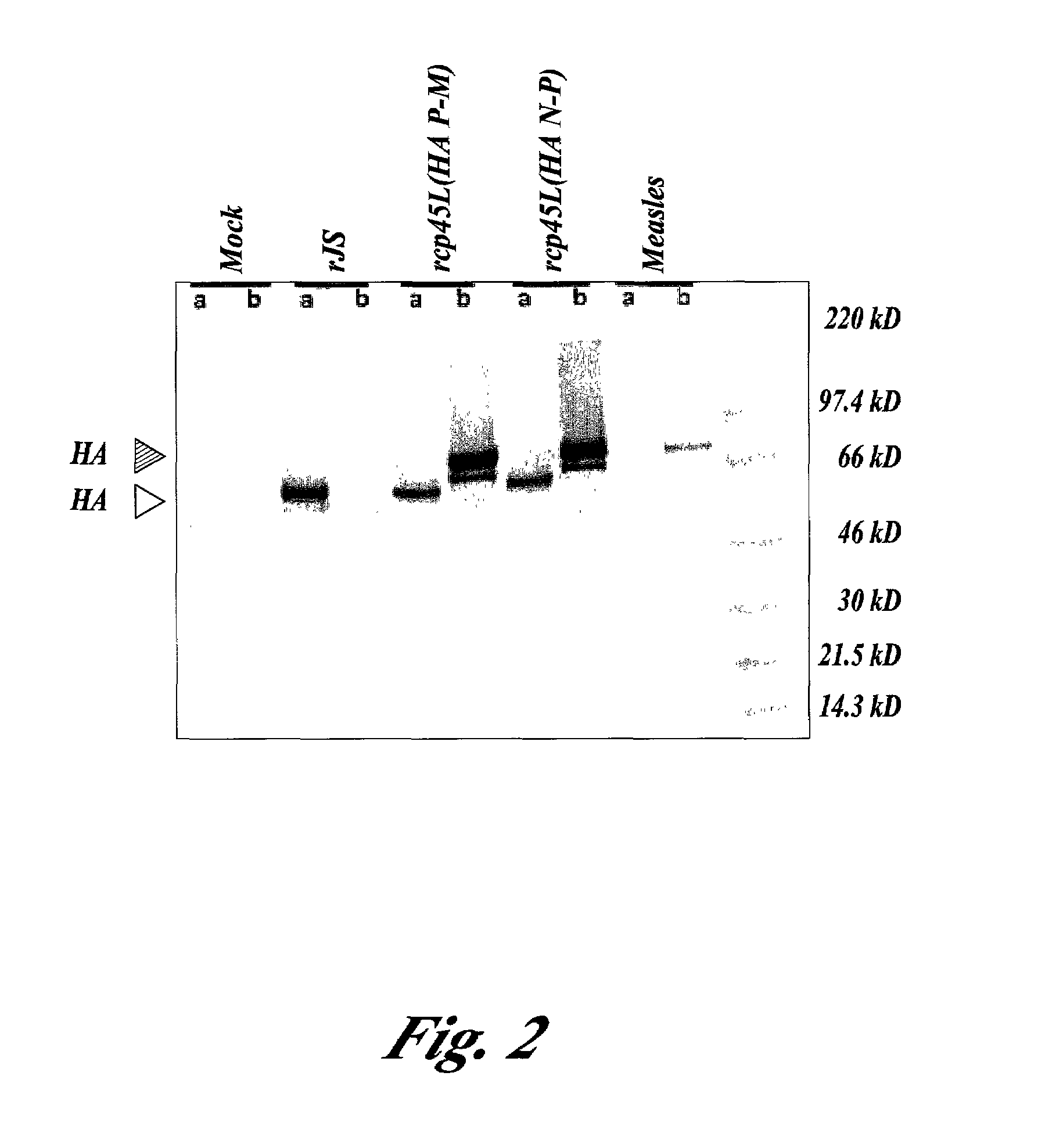Use of recombinant parainfluenza viruses (PIVs) as vectors to protect against infection and disease caused by PIV and other human pathogens
a technology of parainfluenza virus which is applied in the field of use of recombinant parainfluenza virus (piv) as vectors, can solve the problems of low morbidity in children, no approved vaccine agent has yet been achieved for any hpiv serotype, and no proven method for adjusting the level of attenuation, so as to improve the survival rate and prevent the spread of piv and the inflammatory response a human pathogens, a human pathogens and recombinant parainfluenza virus infection and other human pathogens and recombinant parainfluenza virus infection and other human pathogens of a recombinant parainfluenza a technology of a recombination of a vectors, a technology of a virus infection and other human pathogens, applied in medical science, antigens of virus infection ser seropositives of virus infection seropositives of virus infection seropositives of virus infection seropositives of virus infection seropositives of virus infection seropositives of virus
- Summary
- Abstract
- Description
- Claims
- Application Information
AI Technical Summary
Benefits of technology
Problems solved by technology
Method used
Image
Examples
example i
Construction of cDNAs Encoding a Chimeric HPIV3 / Measles Virus-HA Antigenome and Recovery of Infectious Virus
[0219]The full-length cDNA clones, p3 / 7(131)2G+, encoding the complete 15462 nucleotide antigenome of the JS PIV3 wt virus, and pFLCcp45L, which encodes the antigenome of the derivative of JS wt containing three cp45-specific temperature-sensitive mutations in the L ORF of PIV3, have been previously described (Durbin et al., Virology 235:323–332, 1997a; Skiadopoulos et al., J. Virol. 72:1762–8, 1998, each incorporated herein by reference). These clones were used as vectors for the insertion of the HA gene of measles virus to create both wildtype and attenuated HPIV3 chimeric constructs which express a heterologous antigenic determinant, exemplified by the HA protein, of measles virus. The size of each insert containing the HA gene of measles was a multiple of six such that the chimeric virus recovered from the cDNA would conform to the rule of six (Durbin et al., Virology 234:...
example ii
Chimeric rPIV3s Bearing an Antigenic Determinant of Measles Virus Replicate Efficiently in Hamsters and Induce High Titers of Antibodies Against Both HPIV3 and Measles
Determination of the Level of Replication and Immunogenicity of the rPIV3(HA) Viruses in Hamsters
[0229]The levels of replication of chimeric rPIV3s bearing an antigenic determinant of the measles virus was compared with that of their parent rPIV3s to determine if the acquisition of the determinant, exemplified by an HA insert, significantly modified their ability to replicate and to induce an immune response in vivo. In two different experiments, groups of 6 or 7 4–6 week-old Golden Syrian hamsters were inoculated intranasally with 0.1 ml of EMEM (Life Technologies) containing 106.0 PFU of rJS, rcp45L, rcp45L(HA P-M), rcp45L(HA N-P), rPIV3(HA HN-L), or rPIV3(HA P-M) (Tables 2 and 3). On day 4 post-inoculation the hamsters were sacrificed and the lungs and nasal turbinates were harvested. The nasal turbinates and lungs ...
example iii
Construction of Antigenomic cDNAs Encoding a Chimeric HPIV3-1 Vector Bearing a HPIV2 HN Gene as an Extra Transcription / Translation Unit Inserted Between the F and HN Genes, and Recovery of Infectious Viruses
[0236]rPIV3-1 is a recombinant chimeric HPIV3 in which the HN and F genes have been replaced by those of HPIV1 (see, e.g., Skiadopoulos et al., Vaccine 18:503–510, 1999; Tao et al., Vaccine 17:1100–1108, 1999; U.S. patent application Ser. No. 09 / 083,793, filed May 22, 1998; U.S. patent application Ser. No. 09 / 458,813, filed Dec. 10, 1999; U.S. patent application Ser. No. 09 / 459,062, filed Dec. 10, 1999, each incorporated herein by reference). In the present example, the HN gene of HPIV2 was inserted into the rPIV3-1 chimeric virus that served as a vector to produce a chimeric derivative virus, bearing an introduced heterologous antigenic determinant from HPIV2, able to protect against both HPIV1 and HPIV2. The HPIV2 HN gene also was inserted into an attenuated derivative of rPIV3...
PUM
| Property | Measurement | Unit |
|---|---|---|
| immunogenic composition | aaaaa | aaaaa |
Abstract
Description
Claims
Application Information
 Login to View More
Login to View More - R&D
- Intellectual Property
- Life Sciences
- Materials
- Tech Scout
- Unparalleled Data Quality
- Higher Quality Content
- 60% Fewer Hallucinations
Browse by: Latest US Patents, China's latest patents, Technical Efficacy Thesaurus, Application Domain, Technology Topic, Popular Technical Reports.
© 2025 PatSnap. All rights reserved.Legal|Privacy policy|Modern Slavery Act Transparency Statement|Sitemap|About US| Contact US: help@patsnap.com



